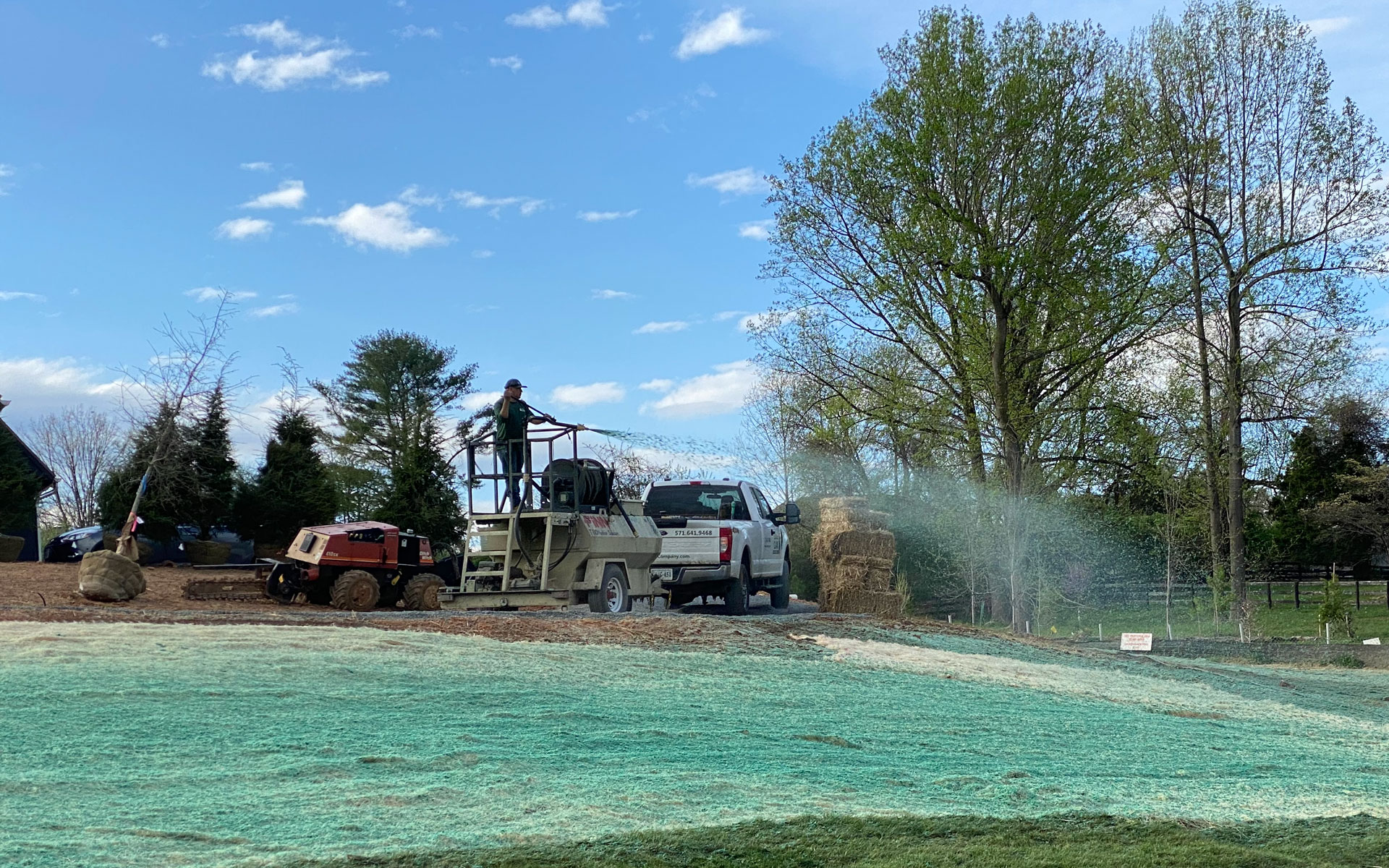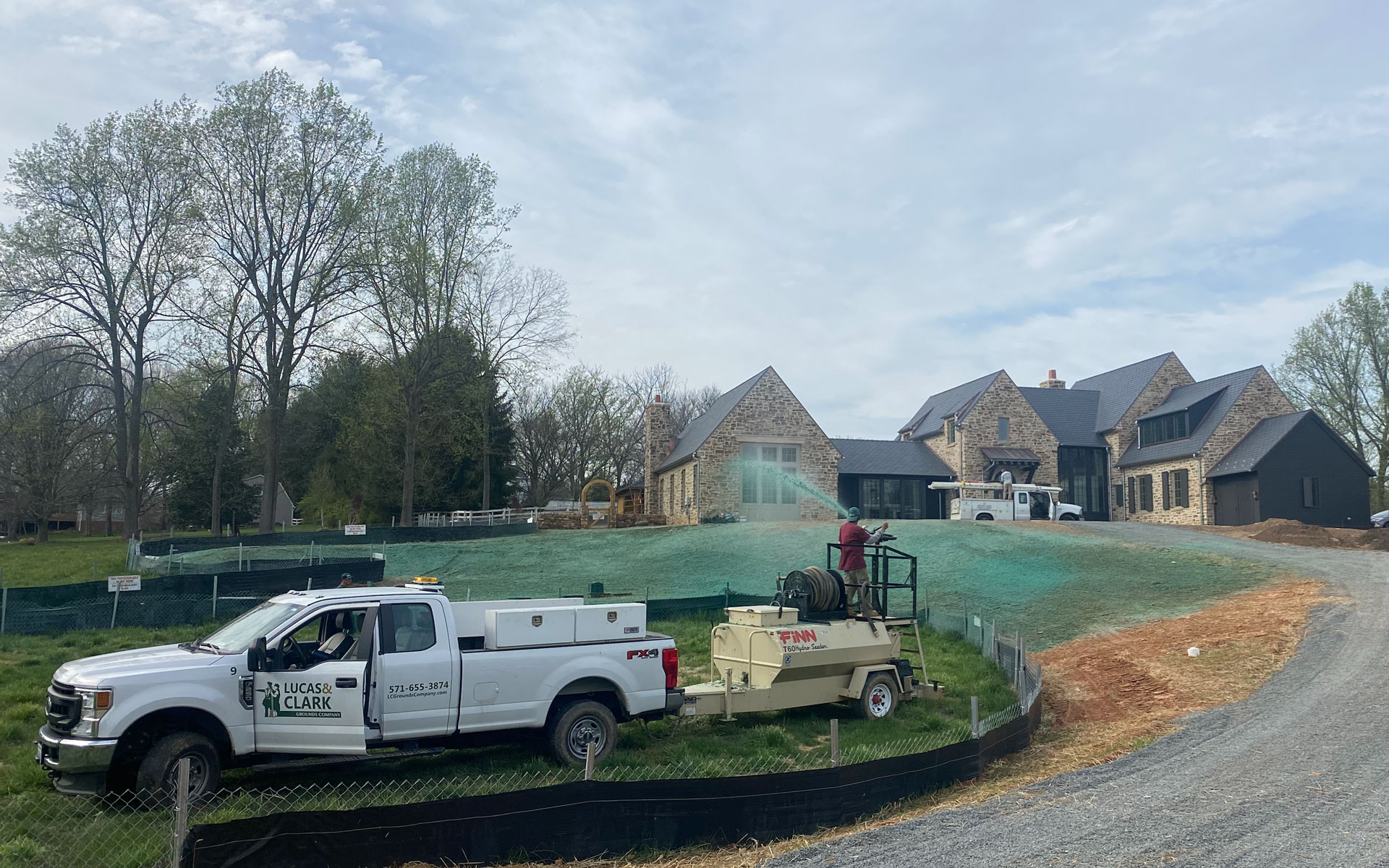How Long Does it Take for Hydroseed to Grow?
As spring unfurls its green tendrils, homeowners and property managers alike turn their attention to reviving lawns and landscapes. Among the arsenal of tools available for achieving a verdant, healthy lawn, hydroseeding holds a place of prominence. This innovative technique is not only efficient but also environmentally friendly and cost-effective, making it a top choice for those looking to enhance their outdoor spaces. Lucas & Clark Grounds Company, with its unwavering commitment to quality and sustainability, delves into the why and how of spring hydroseeding, providing insights and expertise to guide you through the process.
Hydroseeding is an efficient and cost-effective method for establishing a new lawn or stabilizing soil. But, how long does it take for hydroseed to grow? Hydroseeding typically produces visible results relatively quickly. In optimal conditions, such as those found during spring applications, you can expect to see sprouts emerging from the soil within 7 to 10 days after application. This rapid germination is one of the key advantages of hydroseeding over traditional seeding methods.
However, it’s important to note that while initial growth appears quickly, it takes a bit longer for the lawn to fully establish. Generally, you can anticipate a full lawn developing within 3 to 4 weeks after the hydroseeding process. This timeline can vary depending on factors such as soil conditions, climate, and proper maintenance. To ensure the best results, it’s crucial to maintain consistent watering post-application, keeping the soil moist to support seed germination and early growth.
For optimal care, the first mowing should be performed when the grass reaches about 3 inches in height, which helps encourage denser growth and establishes a robust root system. Following this initial period, regular maintenance, including proper watering, mowing, and occasional fertilization, is essential to maintain the health and vitality of your newly established lawn. By following these guidelines and working with experienced professionals like Lucas & Clark Grounds Company, you can achieve a lush, healthy lawn through hydroseeding in a relatively short time frame.
Why Choose Hydroseeding in Spring?
- Optimal Growing Conditions: Spring offers the perfect blend of mild temperatures and adequate rainfall, creating ideal conditions for seed germination and growth. Hydroseeding in spring takes advantage of nature’s nurturing environment, ensuring seeds have the best start possible.
- Cost-Effectiveness: Compared to traditional sod installation, hydroseeding is a more economical option. It offers a significant cost saving without compromising on the quality or coverage of your new lawn.
- Erosion Control: Hydroseeding’s unique mixture helps to bind the soil, reducing erosion caused by spring showers. This is especially beneficial for sloped areas or regions prone to soil displacement.
- Fast Germination: The hydroseeding process ensures that seeds have constant contact with water, nutrients, and soil, promoting quicker germination. Homeowners can expect to see sprouts within 7-10 days, and a full, lush lawn in as little as 3-4 weeks.
- Customizable Seed Mixtures: Unlike pre-grown sod, hydroseeding allows for customization of the seed mix, tailored to the specific needs of your property. Whether it’s a sun-soaked front yard or a shaded backyard, the mix can be adjusted for optimal growth and resilience.
The Hydroseeding Process: A Step-by-Step Guide
- Soil Preparation: The success of hydroseeding hinges on the condition of the soil. Lucas & Clark begins with a thorough evaluation, adjusting pH levels and incorporating organic matter to create a fertile foundation.
- Mixing the Slurry: Hydroseeding uses a slurry of grass seed, water, fertilizer, and mulch. The mulch in the mix helps retain moisture, aiding in seed germination, while the fertilizer provides the necessary nutrients for young grass to thrive.
- Application: The slurry is sprayed over the prepared soil using specialized equipment. This method ensures even distribution, covering large areas quickly and efficiently. The green tint of the mulch mixture allows for precise application, ensuring no area is missed.
- Watering: After application, the area requires consistent watering to maintain moisture in the mulch layer, especially crucial in the first few weeks. Lucas & Clark advises on the optimal watering schedule, ensuring the newly seeded lawn receives the care it needs.
- First Mowing: Patience is key; the first mow should occur once the grass reaches about 3 inches in height. This practice encourages denser growth and helps establish a robust root system.
Maintenance and Beyond
Post-hydroseeding, the lawn will require regular maintenance, including watering, mowing, and occasional fertilization, to maintain its health and vitality. Lucas & Clark offers comprehensive maintenance plans tailored to the unique needs of each lawn, ensuring your outdoor space remains a lush, inviting oasis.
Conclusion
Spring hydroseeding is a smart choice for those looking to quickly and cost-effectively rejuvenate their lawns. With its myriad benefits, including erosion control, fast germination, and customizable seed mixes, hydroseeding by Lucas & Clark Grounds Company stands out as a superior method for lawn establishment and enhancement. Embrace the season of growth with hydroseeding, and transform your outdoor space into a vibrant, green canvas that enhances your home’s curb appeal and your quality of life. Contact us today!


